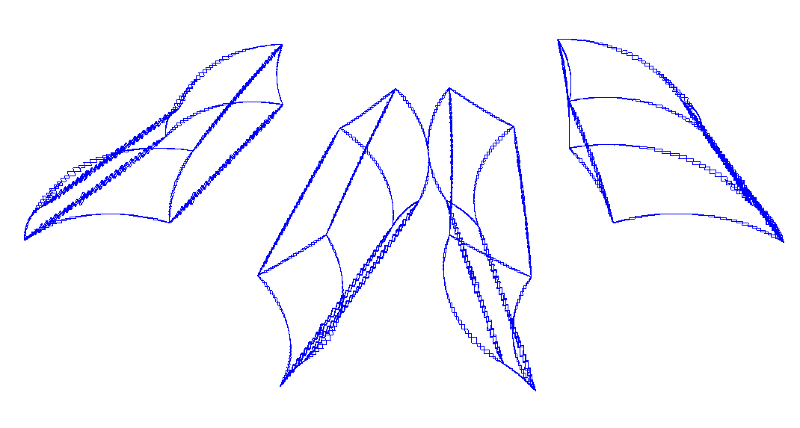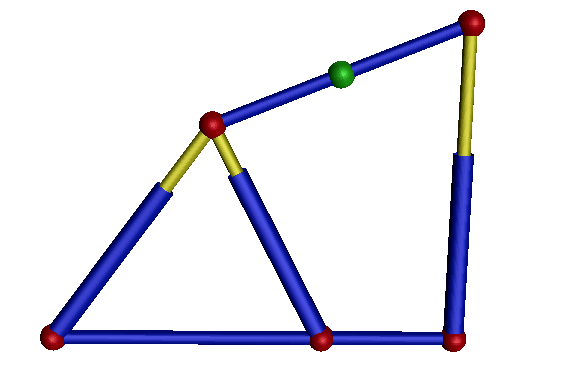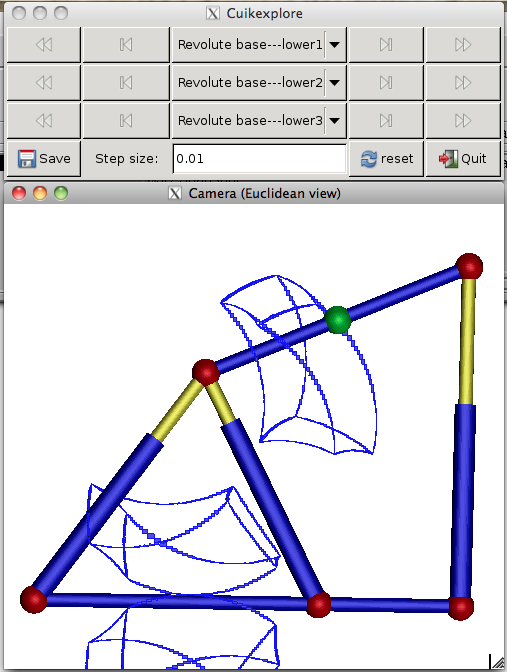|
PlanarParallel.world File Reference Detailed Description
Determining the workspace boundaries of a planar parallel platform. You can get an idea of the workspace to bound executing;
The point to track is the one in green. 
Note that in this way you are actually exploring one of the possible working modes of this robot. Four working modes exists and the workspace computation must be able to determine all of them. To process this problem you have to generate the equations executing either
or
The output is a set of one-dimensional curves that bound the translational workspace of the robot. In both cases the process takes about 7 minutes and generates about 3500 boxes bin/cuiksimplify and bin/cuikaddjacobian are intended to be tools to define the equation set to analyze the singularities on any subset of variables. The workspace boundaries are singularities on the varariables giving the position of the end effector link. bin/cuikTWS is a tool specific to generate the equations characterizing translational workspaces. In both cases the execution takes about 350 seconds and generate about 3500 solution boxes. In both cases you will get a planar plot of the translatinal workspace of the interest variables (the area reachable for the end effector, that is a particular point on the moving platform). Observe that the output has several separated components. The tools included in the CuikSuite are unique in isolationg these kind of workspaces. To obtain a 3D plot you can execute:
or
and then visualize the output
Observe that only one of four working modes is explored in this way. 
Definition in file PlanarParallel.world. |
Follow us!